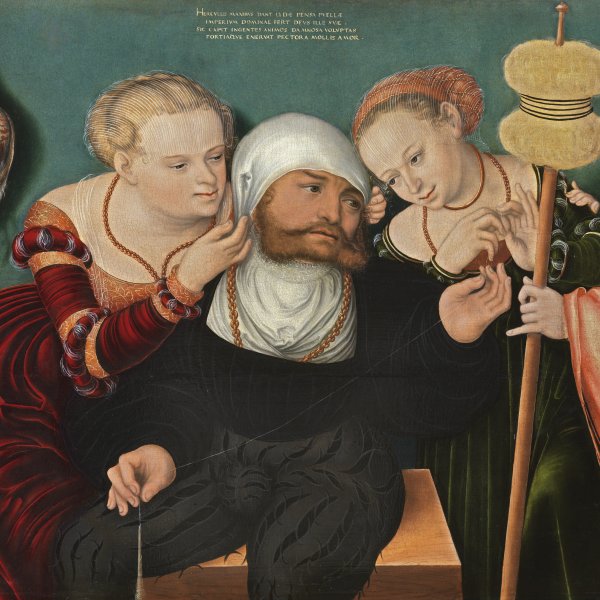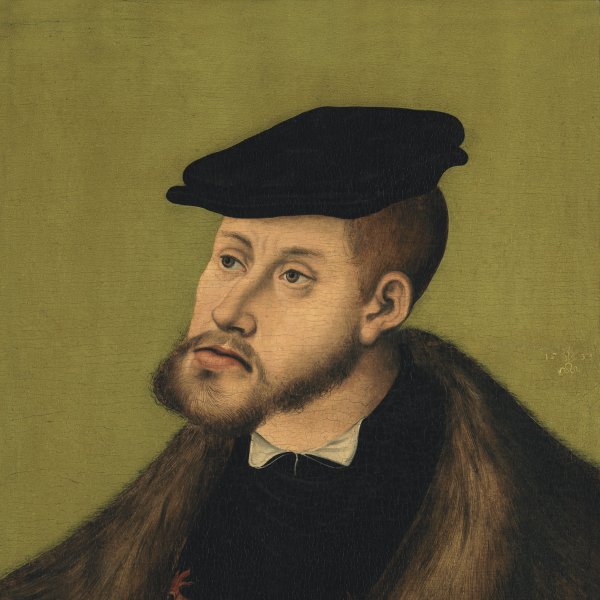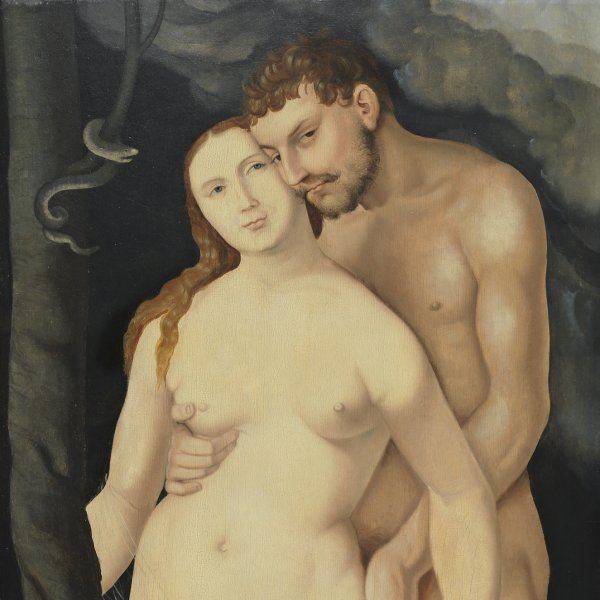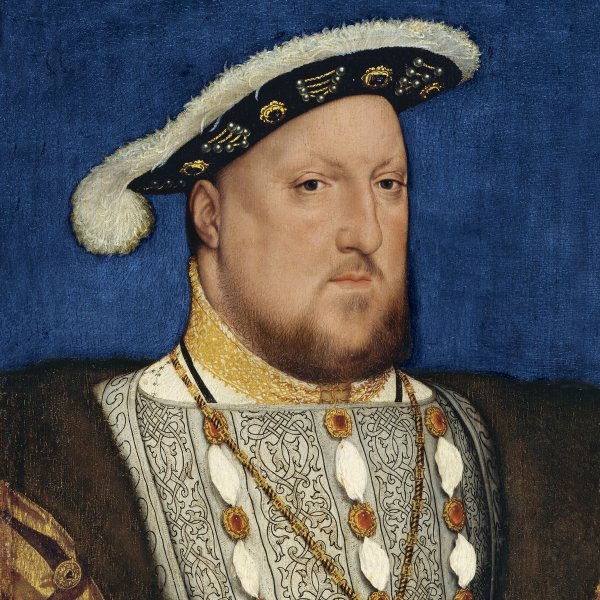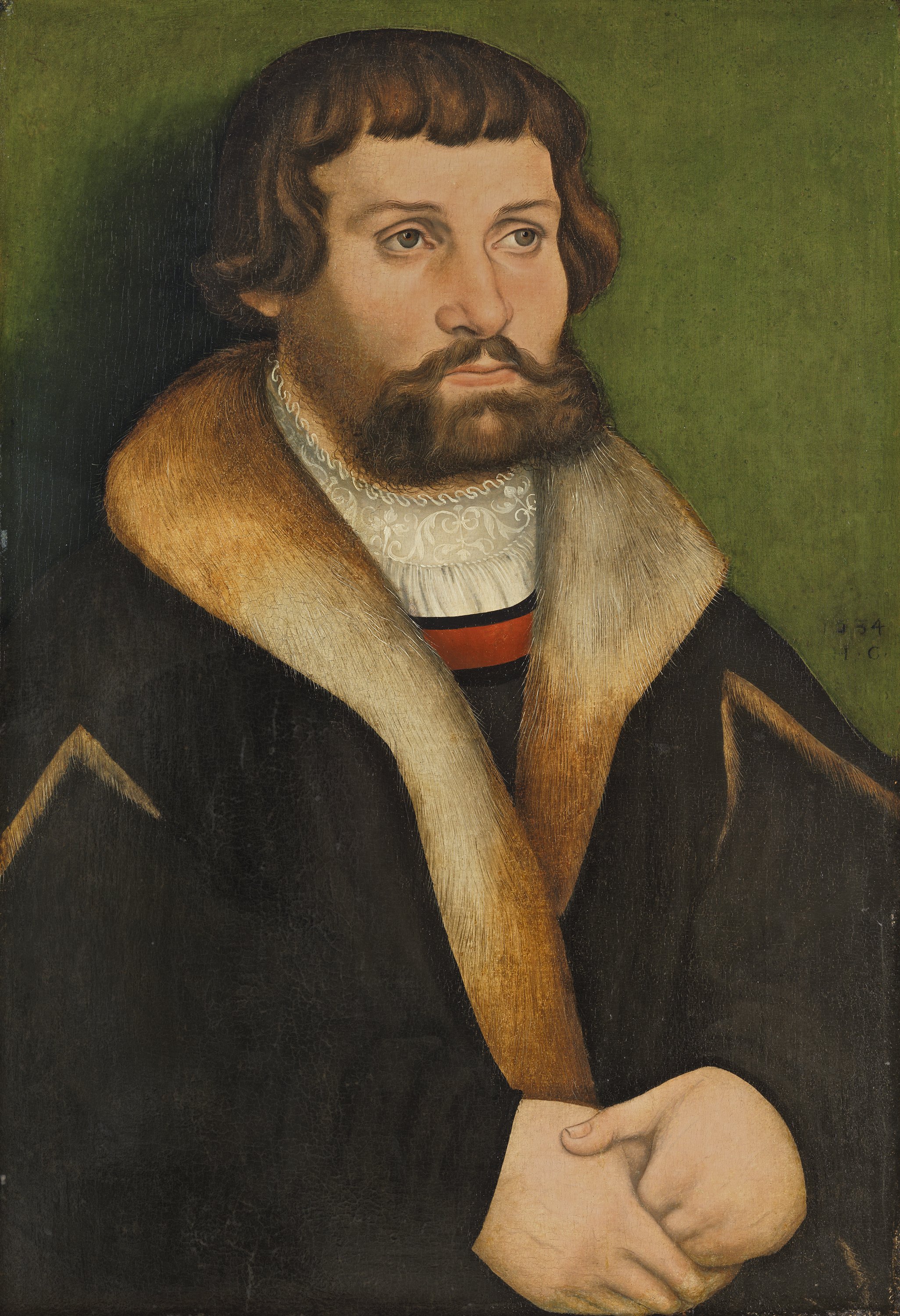Portrait of a Bearded Man
The son of Lucas Cranach the Elder, Hans Cranach first trained in his father’s workshop in Wittenberg. His works are notably indebted to those of Cranach the Elder, a fact that has made it difficult to catalogue their respective oeuvres.
The present panel depicts a half-length figure of a man with a square jaw, clipped beard and crisply defined features. The format, composition and technique are close to that of the Cranach studio in the 1530s but the panel can be identified as a work by Hans Cranach due to the presence of the initials “HC”. The panel is dated 1534 next to the sitter’s left shoulder. It has been suggested that it is a self-portrait due to the inscription on it reading “Hans Maller von Cranach”. In addition, Falk and Koepplin (1974/1976) suggested that it was a self-portrait which formed a pair with Portrait of a young Woman in the Petit Palais in Paris. However, Hans Cranach did not marry and it is now thought that the present panel and the one in Paris depict a patrician couple, probably from Wittenberg.
MGA
The present portrait follows the composition and format developed by Lucas Cranach the Elder for such images. The bustlength sitter poses before a green background on which a dark green shadow is cast on the left. The light illuminates his square face, a shape that is further emphasised by the cut of the beard. The artist precisely defined important elements such as the eyes, eyebrows and nose, devoting less attention to the body and hands, which are slightly flat.
The panel has been proved to be the pair to another of a woman now in the Musée du Petit Palais, Paris. The female sitter has a similar pose to the present one and the two panels are stylistically comparable in important areas such as the nose and eyebrows, sharing the distinctive shadow on the upper eyelids. The female portrait places greater emphasis on the construction of the hands and clothing, which are more volumetric than in the present panel. The two originally formed a diptych and although the sitters have not been identified it has been suggested that they were a middleclass, married couple from Wittenberg or that the portraits were commissioned on the occasion of their wedding. The two panels are similar in size, with shared stylistic features and have the same type of painted marble effect on the reverse. Attempts have been made to identify this sitter with the artist himself or with his father Lucas Cranach.
The panel entered the Collection in 1933 from the Fleischmann gallery in Munich. On the death of Hans Thyssen-Bornemisza in 1948 it was inherited by one of his heirs but was acquired for the Villa Favorita collection the following year from the Böhler gallery.
Mar Borobia





